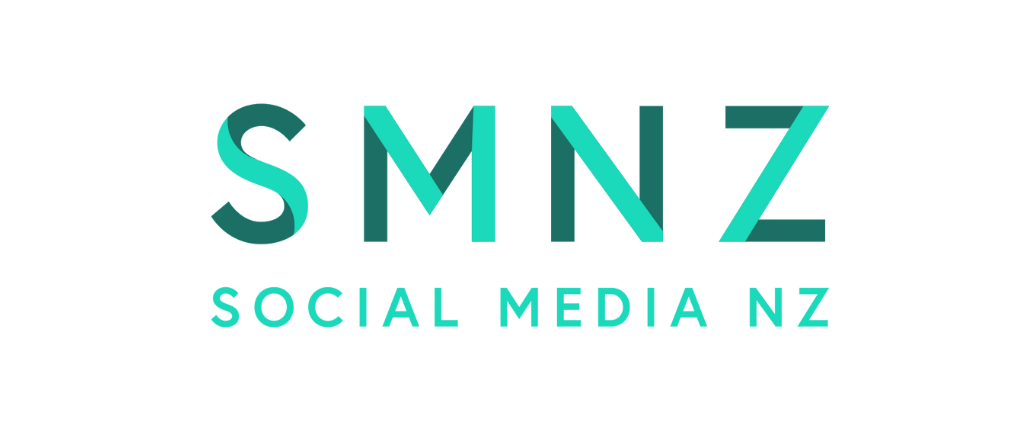Goodbye 2012, Hello 2013!

In this week’s Editor’s Blog, Rebecca wraps up social media for 2012 and looks at where it’s headed in 2013.
Well folks, it’s that time of the year again – Christmas is upon us and the New Year is just around the corner. 2012 has flown by, and so much has happened in the tech sphere over the past year. We’ve seen the coming and going of countless gadgets, been introduced to Windows 8, seen the roll-out of UFB, watched the drama surrounding the Kim Dotcom case unfold, and much, much more.Social media specifically has also seen tremendous growth in the past year, and it’s not slowing down any time soon. Initially thought by many to be nothing more than a “trend”, it’s now clear that social media is here to stay – and it’s time for businesses to sink or swim when it comes to adopting this new communications platform.In this week’s Editor’s Blog, we’re wrapping up social media for 2012 and looking at where it’s headed in 2013, and we’ve got some experts on hand to help out. We spoke to Hannah Rose Pratt, Communications/PR specialist in Canada for an international opinion, and for some local insight we turned to Simone McCallum, Corporate Social & Community Strategist for ASB, and Jennifer Duval-Smith, Executive Director for Social@Ogilvy.We’re also taking a look at the new NAB Social Media Command Centre, which offers a clear picture of how social media will become increasingly integrated into business models as time rolls on.But first, let’s see what our experts had to say when asked for their thoughts on social media’s progress throughout 2012, and their predictions for 2013. Hannah Rose PrattCommunications/PR SpecialistCanadaSocial media has evolved immensely in 2012. From new social media platforms (like Pinterest) gaining popularity, to companies like Instagram and Facebook joining forces, to changes within existing social media platforms (the timeline) – social media is a train moving full speed ahead, and as communicators we need to pay attention.In particular, Facebook has made some extremely controversial changes within the program. Sponsored ads have come into effect, forcing organizations to pay to have their audience or supporters see their page's posts.Although this is a business savvy decision on Facebook's part, this move has cost non-profit organizations in visibility for their truly worthy causes. Supporters of these organizations (such as the company I work for, The Winnipeg Humane Society) have also complained about the timeline format, which gives larger real estate at the top of each Facebook page – but with limitations. Organizations can no longer have "calls to action" in the cover photo such as "please like our page!" or "visit our website!" or even advertising discounts/promotions.Visitors also now see highlighted items first, versus the most recent posts in chronological order. This offers positives and negatives to organizations, which can "pin" or "highlight" posts they want to feature, but due to the sponsored ads, only half of their audience will actually see these posts.Traditional social media platforms like Facebook have made significant changes in 2012, and for many communicators this means a change in the way we operate. Personally, it means being more creative in utilizing more than one social media platform, and even turning to traditional promotion for EARNED media, like press releases, pitches, media advisories, etc. Simone McCallumCorporate Social & Community Strategist, ASBNew Zealand2013 social media predictionsIn 2013 we will see brands use social data more cleverly – generating opportunities for more targeted, relevant use of social media. The tension between light social interaction and commercial social content will be more balanced as brands become increasingly comfortable with talking openly to their community and will get to know and understand which content gets the best results. This will lead to less overtly 'pushy sales' content, and we will see more conversational engagement combined with useful, relevant content which will naturally develop into lead gen.Brands will also move into the next phase of maturity from an organisational perspective. We will see less of the smaller siloed teams, and more enterprise-wide integration with customer support, marketing and PR all working together through the one corporate voice. 'Always On' will be demanded and expected from the customer, so this will force a change in resourcing models if they are not currently scalable.Search and Social will continue to be a crucial part of the sales funnel, and paid social advocacy will become more obvious and less trusted. We will continue to see social and digital converging, and the increasing penetration of mobile devices into our lives will add an extra dimension to how we interact with each other – and with brands – on a daily basis.Smaller social media startups will continue to pop up, and then quietly die, unless they are solving a friction point for consumers. The larger players in the market will continue to dominate although they themselves will wrestle with the right balance of advertising versus unfiltered personal content. Jennifer Duval-SmithExecutive Director, Social@OgilvyNew ZealandKey trends from the year:Facebook – the gorilla in the roomWith recent Neilsen stats clocking Kiwi users at seven hours per month on Facebook, compared to under an hour for other sites, Facebook continues its run as the Goliath over other social sites to tower over all other platforms. Facebook has been criticised for changes to Edgerank, which appear to have reduced the reach of unpaid brand posts. Many have suggested the aim is to drive revenue through paid Facebook media. Whatever Facebook's motivation, the upshot is that brands are having to focus less on fan and post count and more on posts encouraging interaction, driving liking, sharing and commenting, which is more challenging, but not necessarily a bad thing.Year of the visual webOtherwise, 2012 has definitely been the year of the visual web. Many of us prefer to work and learn visually, which is why Pinterest took off like a rocket. It's interesting to see how brands are really starting to get to grips with the platform, which taps into the zeitgeist. Pinterest rewards brands which present compelling visual imagery, and a vision of how users would like their lives to be, rather than a 'product catalogue' approach. It has provided an interesting platform for brand corporate social responsibility and customer engagement. Other takes on the visual presentation include nzgirl.co.nz (which we had a little something to do with) and Rummage.co.nz which allows visual search on TradeMe.Watch Tumblr"Facebook's for grannies" At #4, according to Nielsen with 428,000 users Tumblr is the biggest social platform not to make it on to most brands' social media plans. Effectively a microblogging platform with images, it's also the social network most commonly mentioned to me by teens as permitting them to fly under the parental radar. Therefore it also ought to be a real consideration for more youth focussed brands.Next year...Listen more:What I'd like to see in 2013 is that brands focus more on learning from social media listening across the web, not just on their owned platforms. There's much to be gained, not least of which is understanding what your prospects talk about, what they like and dislike, and where they like to hang out online.Plan for the worst, hope for the bestI'd also like to see every brand plan for crisis (most of which are entirely predictable to some extent), and incorporate a digital crisis communications chapter into their communications plan. It pays to be prepared, and it’s easier to prepare in advance, take my word for it! Wrapping upAll of our above experts have made some interesting and valid points, and the common theme highlights the importance of social media literacy for brands. Those still looking at social media as irrelevant are in for a rude awakening in 2013 (if they have not already experienced one!)That being said, it’s not just about jumping on board social media for the sake of it – you need to know what you’re doing and how to use social media appropriately. This will differ for each individual company, and it’s important that all members of a team are on the same page.If you’re not confident enough in your social media skills to understand how to use it on a daily basis, you’re better off hiring a team to take care of it for you. It’s actually more harmful to use social media poorly than to not use it at all, and this will become especially apparent as we move into 2013.A Shining ExampleSpeaking of brands making good use of social media, just this week we saw the unveiling of National Australia Bank’s Social Media Command Centre in Melbourne.NAB has taken its commitment to social channels to the next level, moving its team of seven into a fancy new command centre jam-packed with the latest tools and tech.“It’s a very visual room,” says Sam Plowman, NAB Executive GM/Direct Banking. “It tells us immediately what’s happening in the social space. We can absolutely get the pulse of the market.”Plowman says the centre was developed specifically to help the bank monitor and manage social network interactions with customers.In keeping with NAB’s dedication to customer service, the new social media command centre will allow the bank to respond to customers and provide help more quickly and effectively, using a “visual social media toolset”.The toolset is built around the Salesforce Marketing Cloud and Intel technology. Plowman says this allows the bank’s social media team to be both reactive and proactive in terms of responding to customer comments and complaints.“It’s a great way for us to stay in touch with what’s been said positively about our organization, but also what’s been negatively said. When we hear the negative, we can address it,” Plowman explains.Plowman believes that having a dedicated space will help NAB keep pushing its social media activities in new directions. He also hopes that the command centre will demonstrate the potential of social media to the rest of the bank, encouraging them to get more involved in the social space.Plowman makes his feelings about the future of social media very clear, stating, “We’re a bank that’s been around 150-160 years. We plan to be around for a lot longer, and social is going to play a very key part in that.”He believes that social media is not here to replace existing communications channels, but rather to supplement them. ATMs, call centres, branches and now social media will work together to provide the best possible experience.Amen!What do you think about the growth of social media in 2012? Do you have any predictions for 2013? Share your thoughts below!

